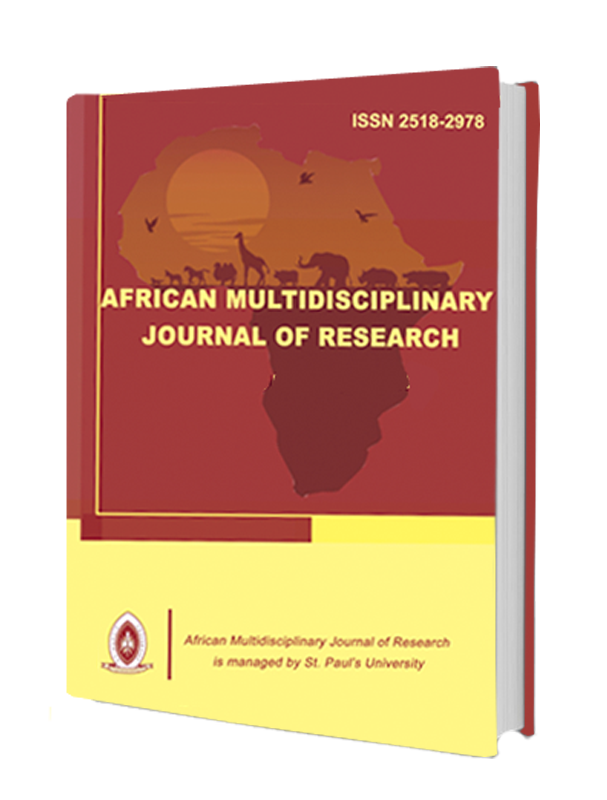The Impact of Social Media on Public Communication by Government Ministries in Kenya
##plugins.themes.academic_pro.article.main##
Abstract
This study sought to investigate government ministries‘ use of social media in disseminating public information. The specific objective for the research was to examine the levels of engagement that government ministries‘ social media managers exhibit on social media sites and its influence on citizen engagement.The mixed method approach of data collection and analysis was utilized in the study. The research design adopted was a descriptive survey. It targeted the managers of government ministries‘ social media pages and the conversations on social media for respective government ministries in Kenya. Content analysis focused on the conversations that were undertaken online in 2015 on Facebook and Twitter for the Respective Ministries. A sample of 4 ministries was selected from the population of 13 ministries with Facebook and Twitter accounts. The data was collected through structured interviews and content analysis of conversations that were held online on the Social media pages. The findings indicate that the government ministries adopted social media in communicating with the members of the public and have accommodated the use of social media as one of the modes of communication in their communication strategies, this has helped in direct communication with members of the public. The study recommends that ministries critically look at the feedback on social media and engage the public more so that the public can participate directly in making decisions that affect them. There is still no mechanism of incorporating feedback from social media in policy making at ministerial level, this means that the communication strategies of the ministries should be explicit in terms of how the feedback will be incorporated in decision making and policy formulation in order to enhance citizen engagement and public participation.
Key Terminologies: Social Media, Government Ministries, Public Communication
##plugins.themes.academic_pro.article.details##
References
- Bertot, J. C., Jaeger, P. T., & Grimes, J. M. (2010). Using ICTs to create a culture of transparency: E-government and social media as openness and anti-corruption tools for societies. Government Information Quarterly, 27, 264-271.
- Bertot, J. C., Jaeger, P. T., & Grimes, J. M. (2010).Engaging the Public in Open Government: Social Media Technology and Policy for Government TransparencyGovernment Information Quarterly, 27, 264-271.
- Bhatnagar, S. (2003) E-government and access to information. In Transparency International (Ed), Global corruption report 2003(pp. 24-32). London: Profile Books
- Chang, H. C. (2010). A New Perspective on Twitter Hash tag Use: Diffusion of Innovation Theory. Paper presented at the Proceedings of the American Society for Information Science & Technology 2010, Pittsburgh, Pennsylvania.
- Dahlberg, L. (2001), ―Computer-mediated communication and the public sphere: A critical analysis‖, Journal of Computer-Mediated Communication, Vol. 7 No. 1.
- Held man A.B, Schindelar J, Weaver JB III (2013). ―Social media engagement and publichealth communication: implications for public health organizations being truly ―social‖. Public HealthReviews.2013; 35
- Heinze1, J., Schneider, H., &Ferié, F. (2013). ―Mapping the consumption of government Communication: a qualitative study in Germany‖ Journal of Public Affairs Volume 13 Number 4 pp. 370–383.
- Java, A., Song, X., Finin, T., & Tseng, B. (2007). Why we twitter: understanding micro blogging usage and communities. Paper presented at the 9th WebMD and 1st SNA-KDD 2007 workshop on web mining and social network analysis, San Jose, California.
- Kakachia K., Pataraia T., Cecire M. (2012). Networked Apathy: Georgian Party Politics and the Role of Social Media
- Matthew M., Marian G. M., (2014). California Management Review, Vol. 56, No. 4, pp. 124143.
- ISSN 0008-1256, eISSN 2162-8564: The Regents of the University of California.
- Meijer A, Thaens M. (2009). ―Public information strategies: making government information available to citizens‖. Information Polity 14: 31–45.
- Mergel, I. June 23, 2014. Assessing the Impact of Government Social Media Interactions http://www.brookings.edu/blogs/techtank/posts
- Mount, M. & Martinez, G. M. (2014).California Management Review, Vol. 56, No. 4, pp. 124-143. ISSN 0008-1256, eISSN 2162-8564. The Regents of the University of California.
- Simon T, Goldberg A, Aharonson-Daniel L, Leykin D, Adini B (2014) Twitter in the Cross Fire—The Use of Social Media in the Westgate Mall Terror Attack in Kenya. PLoS ONE 9(8):e104136.doi:10.1371/journal.pone.0104136
- Twitter. (2012). About Twitter. Retrieved from http://twitter.com/about December 18, 2014.
- Wang X, Wart M. (2007). When public participation in administration leads to trust: an empirical assessment of managers‘ perceptions. Public Administration Review 67: 265 278.

